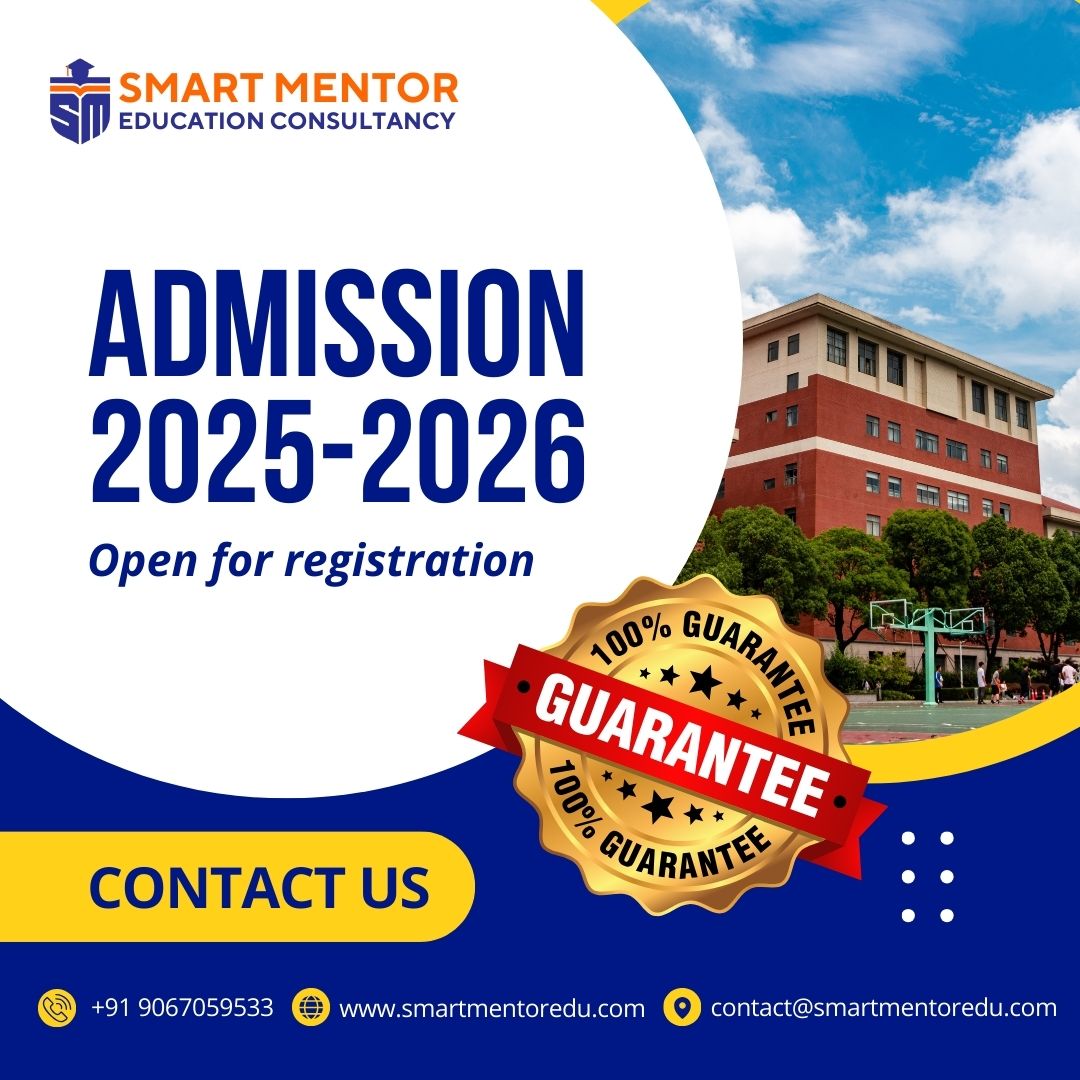
CMAT: Complete Guide to Common Management Admission Test
The Common Management Admission Test (CMAT) is a national-level entrance examination conducted by the National Testing Agency (NTA) for admission to management programs across India. Introduced by the All India Council for Technical Education (AICTE) in 2012, CMAT has emerged as one of the most accessible and widely accepted management entrance examinations in the country.
What makes CMAT particularly significant is its wide acceptance by over 1,000 management institutions, including prestigious AICTE-approved colleges, university departments, and autonomous institutes. The examination serves as a cost-effective alternative to exams like CAT and XAT, providing aspiring management professionals with an additional opportunity to secure admission to quality MBA/PGDM programs.
CMAT evaluates candidates on quantitative techniques, logical reasoning, language comprehension, general awareness, and innovation & entrepreneurship. This comprehensive assessment aligns with the skills required for success in management education and subsequent business careers. With its moderate difficulty level and broad acceptance, CMAT has become an essential gateway for many students pursuing management education in India.
CMAT Exam Pattern
- Mode: Computer-Based Test (CBT)
- Duration: 3 hours (180 minutes)
- Total Questions: 100 questions
- Sections:
- Quantitative Techniques & Data Interpretation (20 questions)
- Logical Reasoning (20 questions)
- Language Comprehension (20 questions)
- General Awareness (20 questions)
- Innovation & Entrepreneurship (20 questions)
- Marking Scheme:
- +4 marks for each correct answer
- -1 mark for each incorrect answer (negative marking)
- 0 for unattempted questions
- Total Marks: 400
- Language: English only
- Navigation: Candidates can navigate between sections and questions freely
CMAT Syllabus and Important Topics
1. Quantitative Techniques & Data Interpretation
Arithmetic:
- Number System
- Percentages
- Profit and Loss
- Interest (Simple and Compound)
- Speed, Time, and Distance
- Time and Work
- Averages and Mixtures
- Ratio and Proportion
- Mensuration
Algebra:
- Linear Equations
- Quadratic Equations
- Functions
- Logarithms
- Sequences and Series
- Inequalities
Geometry and Mensuration:
- Lines and Angles
- Triangles
- Circles
- Quadrilaterals
- Coordinate Geometry
Modern Math:
- Probability
- Permutation and Combination
- Set Theory
- Statistics
Data Interpretation:
- Tables
- Graphs (Bar, Line, Pie)
- Charts
- Caselets
- Data Sufficiency
2. Logical Reasoning
Verbal Reasoning:
- Assumptions
- Statements and Conclusions
- Courses of Action
- Cause and Effect
- Syllogisms
- Strong and Weak Arguments
Analytical Reasoning:
- Coding-Decoding
- Blood Relations
- Direction Sense
- Ordering and Ranking
- Seating Arrangements
- Puzzles
Non-verbal Reasoning:
- Series Completion
- Analogy
- Classification
- Pattern Recognition
- Mirror Images
- Paper Cutting and Folding
3. Language Comprehension
Reading Comprehension:
- Passages from diverse sources
- Inference-based questions
- Author’s tone and perspective
- Main idea and supporting details
- Fact vs. opinion
Verbal Ability:
- Vocabulary
- Grammar
- Fill in the blanks
- Para jumbles
- Sentence completion
- Error detection
- Synonyms and antonyms
- Idioms and phrases
4. General Awareness
Current Affairs:
- National and International events
- Business and Economy
- Sports
- Awards and Honors
- Books and Authors
- Science and Technology
Static GK:
- History and Geography
- Indian Politics and Constitution
- Art and Culture
- Business and Economy
- International Organizations
- Famous Personalities
5. Innovation & Entrepreneurship
Innovation Concepts:
- Types of Innovation
- Innovation Process
- Design Thinking
- Disruptive Innovation
- Innovation Ecosystems
Entrepreneurship:
- Entrepreneurial Process
- Business Models
- Startup Ecosystem
- Funding and Venture Capital
- Business Plan Development
- Success Stories of Entrepreneurs
- Social Entrepreneurship
CMAT vs. Other Management Entrance Exams
CMAT differs from other management entrance exams in several ways:
Unique Features of CMAT:
- Includes Innovation & Entrepreneurship section (not found in CAT/XAT)
- Higher emphasis on General Awareness
- Moderate difficulty level compared to CAT and XAT
- Conducted once a year typically
- Wider acceptance by AICTE-approved institutions
Difficulty Level Comparison:
- CAT: High difficulty, especially in Quantitative and DILR sections
- XAT: High difficulty with unique Decision Making section
- CMAT: Moderate difficulty, more balanced across sections
- SNAP: Moderate to high difficulty with emphasis on speed
- MAT: Relatively easier with more sections
Strategy Implications:
- CMAT requires wider knowledge base (due to GA and Innovation sections)
- Time management is less challenging in CMAT compared to CAT/XAT
- Balanced preparation across all sections is more important for CMAT
CMAT Preparation Strategy
1. Recommended Study Materials & Books
Quantitative Techniques & Data Interpretation:
- Quantitative Aptitude for Competitive Examinations by R.S. Aggarwal
- How to Prepare for Quantitative Aptitude for CAT by Arun Sharma
- Data Interpretation by Arun Sharma
Logical Reasoning:
- A Modern Approach to Logical Reasoning by R.S. Aggarwal
- Logical Reasoning and Data Interpretation for the CAT by Nishit K. Sinha
Language Comprehension:
- How to Prepare for Verbal Ability and Reading Comprehension for CAT by Arun Sharma & Meenakshi Upadhyay
- Word Power Made Easy by Norman Lewis (for vocabulary)
- High-quality newspapers like The Hindu, The Economic Times
General Awareness:
- Manorama Yearbook
- Current affairs magazines (India Today, Frontline)
- Business newspapers (Economic Times, Business Standard)
- Monthly GK digest publications
Innovation & Entrepreneurship:
- Innovation and Entrepreneurship by Peter F. Drucker
- The Lean Startup by Eric Ries
- Business newspapers and magazines for case studies
- Online resources on startup ecosystems and innovation
Additional Resources:
- Previous years’ CMAT papers
- Online CMAT mock test series from reputed coaching institutes
- CMAT preparation apps and online platforms
2. Structured Timeline for Preparation
- 4-6 Months Before CMAT:
- Build fundamentals across all sections
- Focus on concept clarity rather than speed
- Create comprehensive notes for revision
- Begin with basic level questions
- Start daily current affairs reading
- 2-4 Months Before CMAT:
- Start practicing moderate to difficult level questions
- Begin taking sectional tests
- Analyze performance to identify weak areas
- Develop shortcuts and techniques for faster solving
- Focus on building GK and Innovation & Entrepreneurship knowledge
- 1-2 Months Before CMAT:
- Take full-length mock tests (1-2 per week)
- Detailed analysis of each mock test
- Focus heavily on weak areas
- Revise formulas, concepts, and shortcuts regularly
- Update General Awareness knowledge
- Develop a test-taking strategy
- Last Month Before CMAT:
- Intensive mock test practice (2-3 per week)
- Revise high-yield topics
- Fine-tune exam strategy based on mock performance
- Focus on accuracy, time management, and selection of questions
- Update General Awareness with recent events
3. Section-wise Preparation Tips
Quantitative Techniques & Data Interpretation
- Master the fundamental concepts and formulas
- Practice calculation shortcuts and approximation techniques
- Develop a formula sheet for quick revision
- Focus on high-frequency topics like arithmetic and algebra
- Practice diverse DI formats (tables, graphs, charts)
- Take timed practice tests to improve speed and accuracy
Logical Reasoning
- Identify patterns in different types of reasoning questions
- Practice puzzles and arrangements daily
- Develop frameworks for approaching different types of logical reasoning
- Focus on both verbal and non-verbal reasoning
- Take sectional tests to improve speed and accuracy
- Maintain an error log to track and revisit mistakes
Language Comprehension
- Read diverse content daily (30-60 minutes)
- Build vocabulary through systematic learning and retention
- Practice reading comprehension passages with timed constraints
- Learn grammar rules and their applications
- Practice para-jumbles and sentence completion regularly
- Focus on inference-based questions in RC
General Awareness
- Develop a daily routine for current affairs (15-30 minutes)
- Create monthly compilations of important events
- Focus on business, economy, and entrepreneurship news
- Revise static GK periodically
- Take regular GA quizzes to test retention
- Pay special attention to recent appointments, awards, and business developments
Innovation & Entrepreneurship
- Study basic concepts of innovation and entrepreneurship
- Read about successful startups and entrepreneurs
- Understand business models and startup funding
- Follow entrepreneurship trends and developments
- Practice case studies related to business innovation
- Connect concepts with real-world examples
4. Mock Test Strategy
- Frequency Progression:
- Start with 1 mock test per week (2-3 months before exam)
- Increase to 2 mock tests per week (1-2 months before exam)
- Take 2-3 mock tests per week in the final month
- Analysis Approach:
- Dedicate 2-3 hours to analyze each mock test
- Review all questions (attempted and unattempted)
- Identify patterns in mistakes
- Track performance metrics across mocks
- Maintain an error log with detailed notes
- Simulation Setting:
- Take mocks in exam-like conditions
- Follow exact timing protocols
- Avoid distractions during the test
- Practice with the on-screen calculator
5. Time Management During CMAT
- Overall Strategy:
- Allocate approximately 35-40 minutes per section
- Keep 10-15 minutes buffer for final review
- Attempt your strongest sections first to build confidence
- Section-specific Allocation:
- Quantitative Techniques: 40-45 seconds per question
- Logical Reasoning: 45-50 seconds per question
- Language Comprehension: 50-60 seconds per question
- General Awareness: 25-30 seconds per question
- Innovation & Entrepreneurship: 30-35 seconds per question
- Question Selection:
- Scan through questions quickly to identify easy, moderate, and difficult ones
- Attempt easy and moderate questions first
- Return to difficult questions if time permits
- Remember the negative marking while making decisions
Top Business Schools Accepting CMAT Scores
Premier Government Institutions
- Jamnalal Bajaj Institute of Management Studies (JBIMS), Mumbai
- Sydenham Institute of Management Studies, Research and Entrepreneurship Education (SIMSREE), Mumbai
- K J Somaiya Institute of Management Studies and Research, Mumbai
- Department of Management Sciences (PUMBA), Pune University
- Faculty of Management Studies, Delhi University (for some programs)
- National Institute of Industrial Engineering (NITIE), Mumbai (for some programs)
Top AICTE-Approved Colleges
- Institute of Management Technology (IMT), Ghaziabad
- Prin. L.N. Welingkar Institute of Management Development and Research (WeSchool), Mumbai
- IFIM Business School, Bangalore
- Institute for Technology and Management (ITM), Navi Mumbai
- Balaji Institute of Modern Management (BIMM), Pune
- Indus Business Academy, Bangalore
- Alliance School of Business, Bangalore
- Birla Institute of Management Technology (BIMTECH), Greater Noida
- Prestige Institute of Management, Gwalior
- NDIM, New Delhi
University Departments
- Department of Management Studies, Savitribai Phule Pune University
- Faculty of Management Studies, Banaras Hindu University
- Department of Management Sciences, University of Mumbai
- Faculty of Management Studies, MS University, Baroda
- Department of Management, Jamia Millia Islamia
CMAT Admission Process and Beyond
CMAT to MBA Admission Journey
- CMAT Registration and Examination:
- Register on the official CMAT website
- Appear for the computer-based test
- Results typically announced within 2-3 weeks
- Institution Application:
- Apply to desired colleges using CMAT score
- Different institutions have different application processes
- Pay application fees for each institution
- Shortlisting Process:
- Institutions release shortlists based on CMAT score and profile
- Shortlisting criteria vary across institutions
- Group Discussion (GD):
- Evaluates communication, leadership, and team skills
- Topics generally cover current affairs, business, and social issues
- Personal Interview (PI):
- In-depth evaluation of personality, knowledge, and fit
- Questions may cover academics, work experience, current affairs
- Written Ability Test (WAT) – conducted by some institutions:
- Essay writing to assess written communication skills
- Topics typically related to current affairs or management concepts
- Final Selection:
- Based on composite score of CMAT, academic performance, work experience, and GD-PI-WAT performance
- Different institutions assign different weights to these components
Profile Building Beyond CMAT Score
Business schools evaluate candidates holistically. Key aspects of profile building include:
- Academic Excellence:
- Consistent performance across X, XII, and graduation
- Relevant certifications and additional courses
- Work Experience (if applicable):
- Quality of roles and responsibilities
- Achievements and impact
- Progression and growth
- Extracurricular Activities:
- Leadership positions in college/community
- Sports achievements
- Cultural activities and talents
- Social Responsibility:
- Volunteer work
- Community service
- Social impact initiatives
- Professional Certifications:
- Relevant industry certifications
- Online courses from reputed platforms
- Workshops and seminars
Post-CMAT Preparation
After taking CMAT, the journey continues with preparation for subsequent stages:
GD Preparation
- Stay updated on current affairs, business, and management topics
- Practice articulating thoughts clearly and concisely
- Develop active listening skills
- Learn to contribute meaningfully without dominating
- Practice with mock GDs in diverse group settings
PI Preparation
- Prepare a compelling introduction about yourself
- Review your application and be ready to explain all aspects
- Anticipate questions about your academic and professional choices
- Stay updated on industry trends relevant to your background
- Practice through mock interviews with feedback
WAT Preparation
- Practice writing concise, structured essays within time limits
- Work on developing clear introductions, logical arguments, and impactful conclusions
- Read diverse content to build vocabulary and writing style
- Practice timed writing on management and current affairs topics
Career Opportunities After MBA/PGDM
A management degree from a good institution opens doors to diverse career paths:
Traditional MBA Career Paths
- Marketing: Brand management, digital marketing, market research
- Finance: Corporate finance, investment banking, equity research
- Human Resources: Talent acquisition, HR business partner, training and development
- Operations: Supply chain management, production planning, quality management
- Consulting: Management consulting, strategy consulting
Emerging MBA Career Options
- Digital Marketing: Social media marketing, content marketing, SEO/SEM
- Business Analytics: Data analysis, business intelligence, predictive modeling
- Fintech: Digital payments, investment technology, insurtech
- E-commerce: Category management, vendor management, customer experience
- Product Management: Especially in technology companies
Entrepreneurship Opportunities
- Startups leveraging business education and networks
- Family business management and expansion
- Franchise opportunities
- Consulting practices
- Social entrepreneurship initiatives
Conclusion
The Common Management Admission Test (CMAT) represents an accessible yet comprehensive gateway to quality management education in India. With its balanced assessment of quantitative techniques, logical reasoning, language comprehension, general awareness, and innovation & entrepreneurship, CMAT effectively identifies candidates with the potential to excel in the diverse field of management.
What makes CMAT particularly valuable is its wide acceptance across over 1,000 AICTE-approved institutions, university departments, and autonomous institutes, providing aspirants with numerous options for pursuing their management education goals. The examination’s moderate difficulty level, compared to CAT and XAT, also makes it a strategic choice for many candidates.
Successful preparation for CMAT requires a well-rounded approach covering all five sections, with special attention to General Awareness and Innovation & Entrepreneurship, which distinguish CMAT from other management entrance exams. Beyond achieving a competitive CMAT score, candidates should focus on holistic profile development to enhance their chances of selection at their preferred institutions.
Interested in Direct Admission in India?
Get Direct Admission in India’s Top Universities / College.





